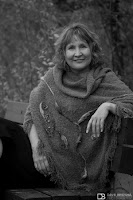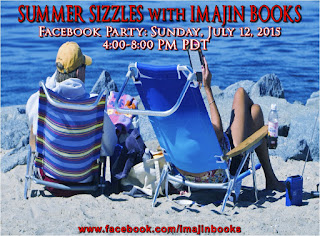Oh, no! What do I do?
Faced with the unexpected, how do you react?
We're all creatures of habit. Being able to perform complicated actions with little or no thought allows us to free up our brain for creative thinking. There are likely many amazing ideas that owe their existence to the morning rituals of teeth-brushing and hair-combing.
However, as with all great evolutionary adaptations, there are downsides to this fabulous ability of ours. Getting stuck in routines which are no longer useful, is one.
Being unable to to deal with new circumstances is another. We become so used to doing things the way things have always been done, stepping out of our usual behaviour to meet the unexpected can be very discomforting.
This happened to me recently when I received a reply from a publishing house to my question about whether or not they'd care to have a look at my manuscript.
 |
| Eileen Schuh, author |
Now, submission guidelines are a problem for both publishers and writers, both parties complain bitterly about them. Publishers complain writers don't abide by them and writers complain that every publisher wants something different these days, the guidelines are confusing, extensive, and at times impossible to follow.
Both parties' complaints are valid. Submission procedures used to be standardized--I know, I've been submitting manuscripts for thirty years. You used to double space on 8.5" x 11" white paper, use Times New Roman font, indent paragraphs five spaces, have one inch margins all around, and include your name, the title, and page number on each page following the first one. There used to be two spaces between sentences. On page one, you listed the word count, your address and phone number, and the rights you were offering (usually first North American serial rights). You submitted by mailing the entire manuscript from the post office and including a self-addressed-stamped envelop for reply and/or return of the manuscript.
Not one of those things is standard procedure anymore, making submissions time-consuming and confusing and resulting in many submission errors. For each submission, one must first research the submission guidelines, which are often hidden in unexpected places on publishers' websites. One must carefully, point-by-point go through each requirement and make the necessary changes to one's document and remember to remove the formatting done to meet the previous publishers' guidelines. One must find where and how to send the manuscript (email or snail mail), locate the name of the contact person if at all possible (to personalize your submission and give it a better chance of being seriously reviewed), and so on.
I've become used to doing all that, and getting better at making fewer errors. So when I received an email reply to my submission question from a large Canadian publisher yesterday--well, I'm still re-reading it. Unable to accept it as fact. Not knowing what to do next.
"Our Canadian Division," the email says, "reviews any material submitted by Canadian writers...There are no special editing or guidelines required..."
Huh? No guidelines? No...special font? No margins, page numbers, brief synopsis or lengthy author bio required? No marketing plan? Would it help if I send them anyways? Will it annoy you if I do? If I don't? Do you want me to send you the entire manuscript? The first chapter? The first fifty pages?
The only protocol authors are advised to follow is to snail mail their submissions, no emails.
Having the ability to submit whatever I want should leave me feeling yeehaw liberated. However, I'm feeling quite unsettled. I simply don't trust my ability to decide what is needed to impress a publisher.
Out of habit, perhaps, I want to revert back to the submission standards of yesteryear. But will that make me look old-fashioned and count against me? Sending the entire manuscript these days costs a fortune in postage and since most publishers asking for print submissions want only the first few pages or chapters, is that the better way to go?
I do want to brag about my past accomplishments to further entice the acquisitions editor to take my submission seriously. Should I list my publishing credits in a short and sweet cover letter or include an entire bio? How much of the story should I reveal up front? Just a blurb like one reads on the back cover of a paperback, or a chapter-by-chapter analysis--to encourage that editor to read right to the end (which is always the best part of a book).
I have to laugh at myself. Here I am, given all this freedom and all I can think is, "Oh, no! What do I do now?"
"What do I do now?" is brought to you by:
"…it will
surprise, titillate and fascinate you"
"…kidnaps the
reader and compels them to read more.”
"A story of
intrigue, love, and lust"









